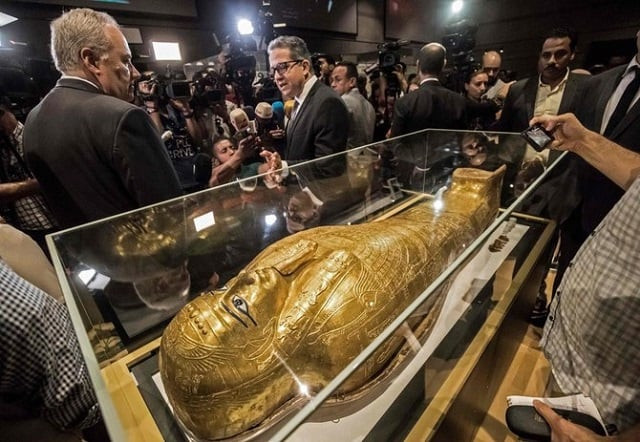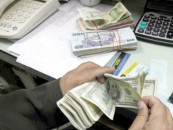Stolen golden coffin makes return from New York to Cairo
Dating back to the Ptolemaic period, the coffin was designed for a high priest named Nedjemankh

Egypt's Antiquities Minister Khaled El-Enany (L) and Chargé d'Affaires at the U.S. Embassy in Cairo Thomas Goldberger look at the Golden Coffin of Nedjemankh, on display at the National Museum of Egyptian Civilization in Cairo on October 1, 2019, following its repatriation from the US. PHOTO: AFP
Standing at 1.8 metres (six foot), the fine gilded sarcophagus has gained notoriety, apart from for its historical value, for its role at the centre of an international trafficking ring.
Dating back to the Ptolemaic period (1st-2nd century BC), the ornate wooden coffin was designed for Nedjemankh, a high priest of the ram-headed god Heryshef.
Plan finalised to protect Neolithic site of Mehrgarh
The shimmering artifact adorned with gesso reliefs had been housed since 2017 in New York's Metropolitan Museum, which purchased it from a Paris art dealer for around 3.5 million euros ($3.8 million).
But in February, a Met exhibition which named the high priest had to shut down after being informed the sarcophagus had been plundered by a multi-national trafficking ring.
It had been smuggled out of Minya in southern Egypt in 2011, the year that long-time autocrat Hosni Mubarak was toppled in a popular revolt.
Egypt's rival camps wage online battle over President Sisi
It had then made its way to the United Arab Emirates (UAE) and Germany before landing up in France.
"I am very happy to have this piece back again in Egypt... We will know all the details about the theft later," Mostafa Waziri, secretary general of the Egyptian Supreme Council of Antiquities, told reporters at the National Museum of Egyptian Civilisation unveiling.
Egypt has sought to promote its archaeological heritage in a bid to revive its vital tourism sector, which took a battering from political turmoil after the revolution.



















COMMENTS
Comments are moderated and generally will be posted if they are on-topic and not abusive.
For more information, please see our Comments FAQ